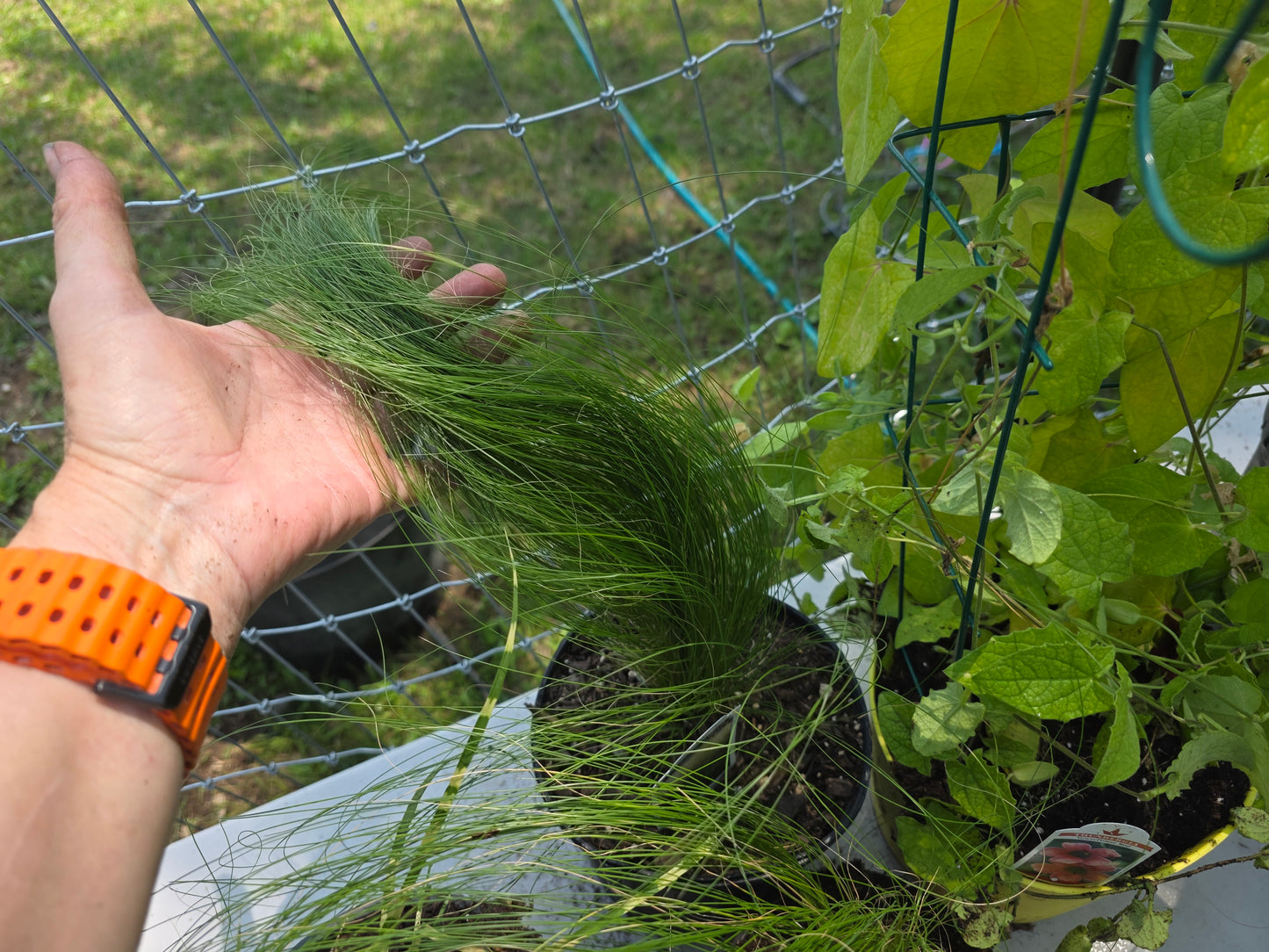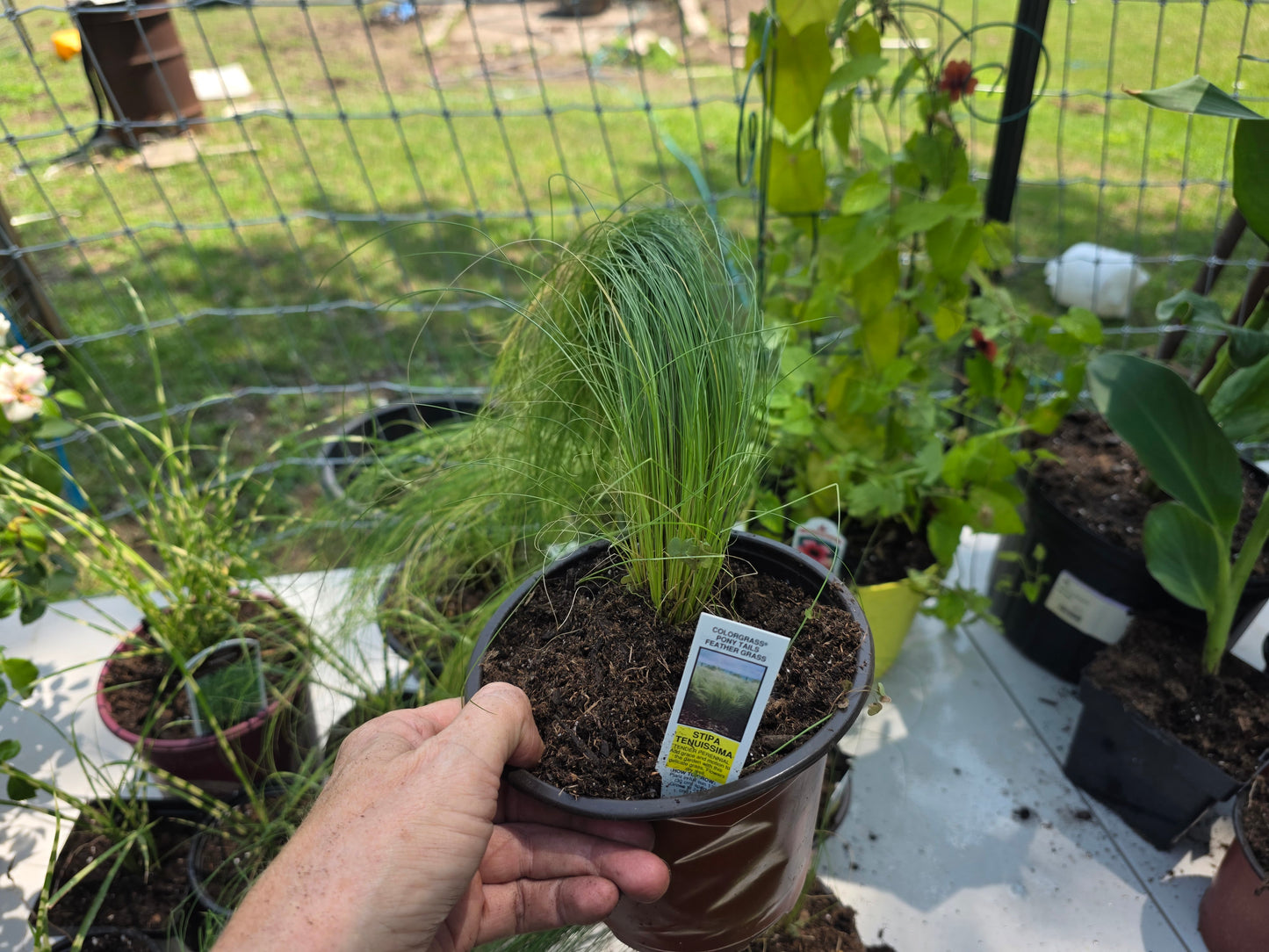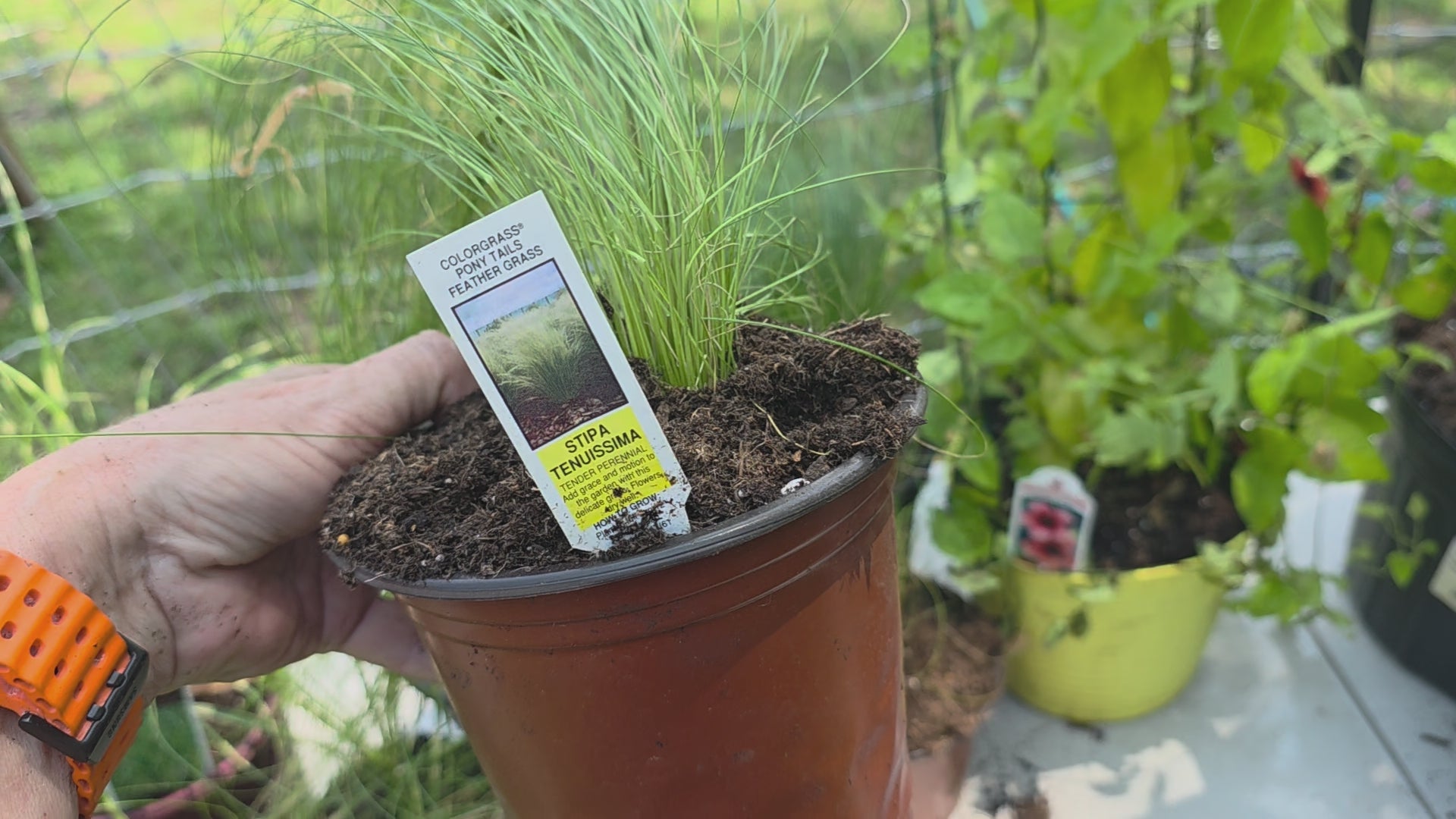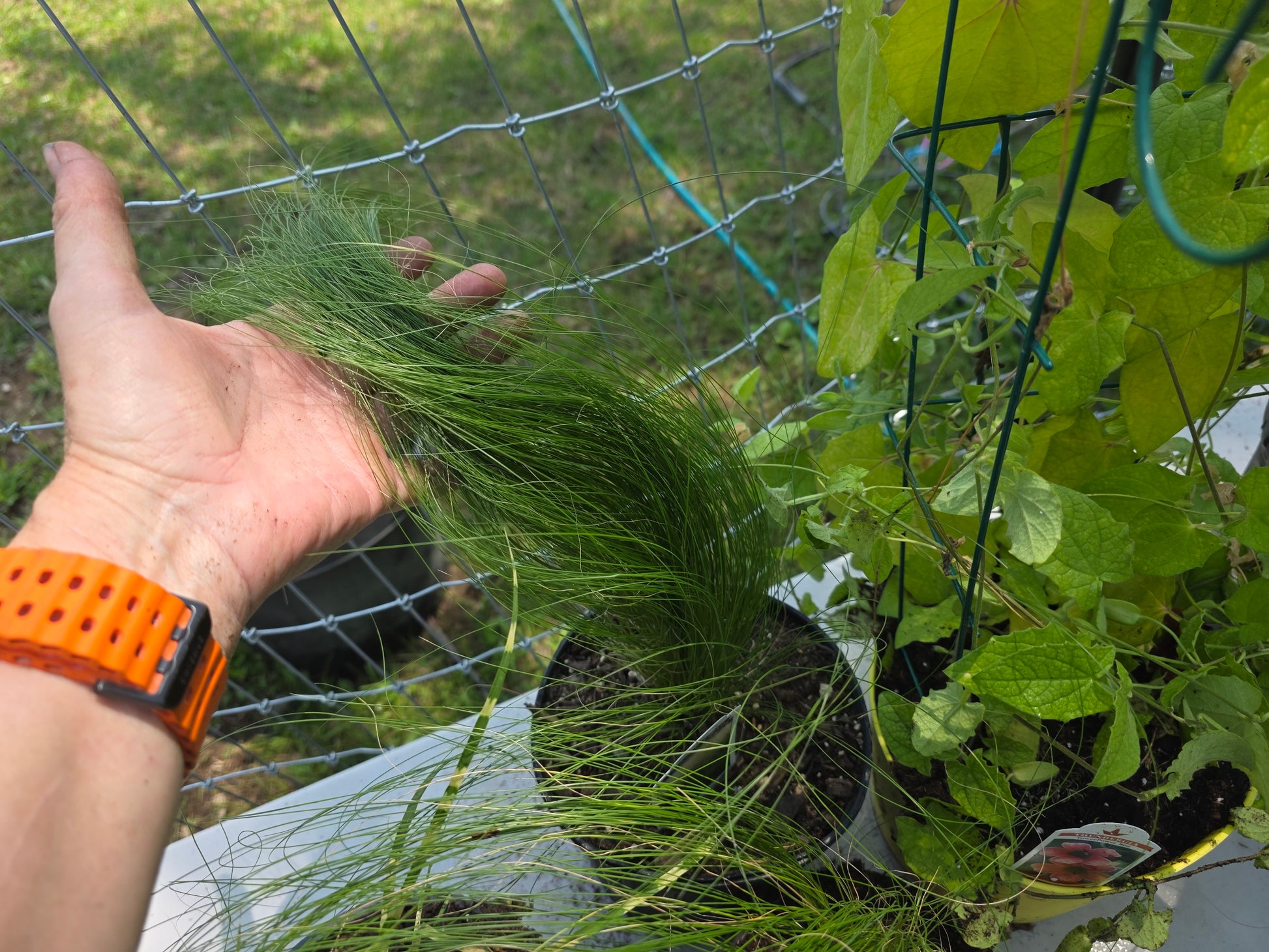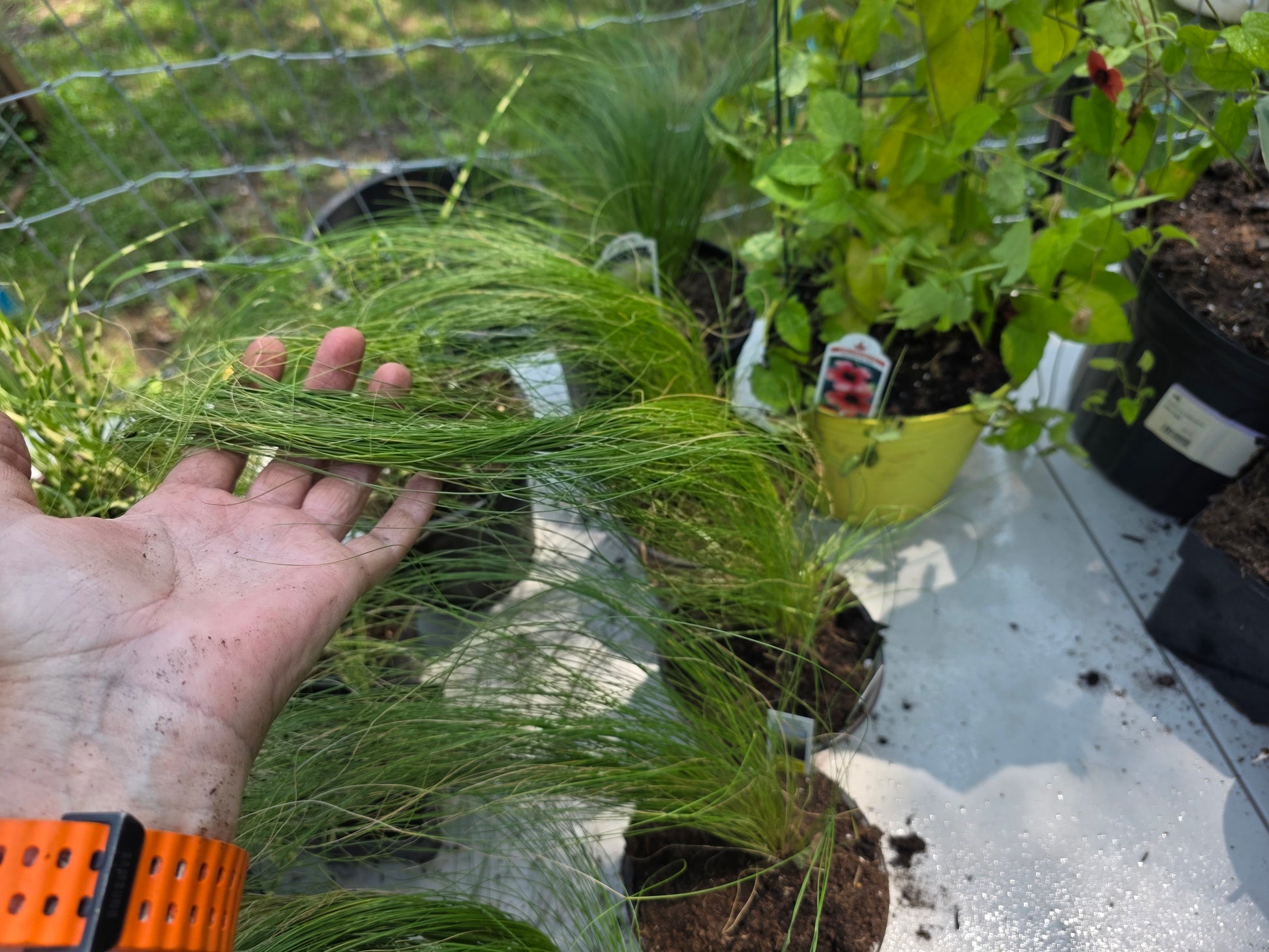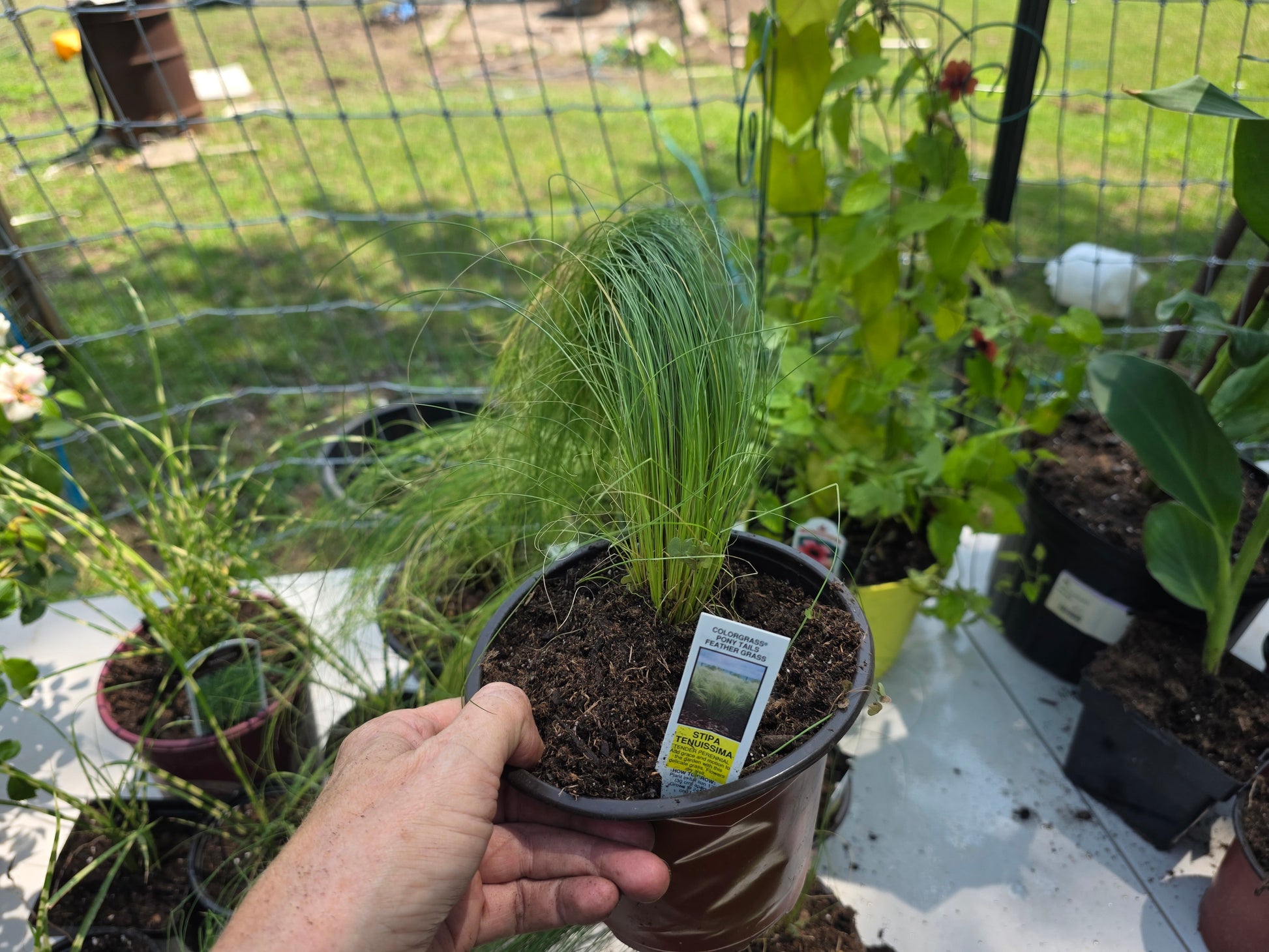Diane Van Dyk Co.
Feather Grass 'COLORGRASS PONY TAILS '
Feather Grass 'COLORGRASS PONY TAILS '
Couldn't load pickup availability
Pony Tails feather grass: a graceful and adaptable ornamental grass
Soft and fun to pet. It could be groomed to stay in one of those pots where the plant looks like hair growing out. Certainly a fun grass.
Grown in 4 inch pot, but ships without pot . this is rooted starter plants ready to plant. It consists of 2 or 3 rooted grass pieces
Pony Tails feather grass, also known as Mexican Feather Grass or Nassella tenuissima (formerly Stipa tenuissima), is a popular ornamental grass valued for its fine texture, graceful movement, and drought tolerance. It's a perennial grass hardy in USDA Zones 6-10, forming dense, fountain-shaped clumps. It thrives in full sun and well-drained soil, making it a good choice for sunny borders, rock gardens, and xeriscapes (low water gardens).
Here's a breakdown of its features, care requirements, and landscaping uses:
Features
Delicate Foliage: Pony Tails feather grass is characterized by its fine, threadlike, green leaves that create a soft, airy look.
Feathery Plumes: In summer and fall, it produces showy, greenish-white plumes that mature to a golden honey-brown, adding to its visual appeal.
Movement: The foliage and plumes sway gracefully in the slightest breeze, creating a sense of movement in the garden.
Size: It typically grows to be 18 to 24 inches tall and wide.
Care requirements
Light: Full sun to light shade (at least 6 hours of direct sunlight per day is ideal).
Soil: Prefers light, well-drained soil; tolerates sandy or even poor soils, according to Web Garden Centre.
Watering: Drought-tolerant once established; water regularly after planting until established, then only during prolonged dry spells.
Fertilizing: Rarely necessary; a light application of a low-nitrogen fertilizer can be applied in spring to encourage growth if desired.
Pruning: Prune once a year in late winter or early spring before new growth emerges to remove dead foliage.
Pests & Diseases: Rarely affected by pests or diseases, but root rot can occur in overly wet conditions.
Hardiness: Hardy in USDA Zones 6-10.
Landscaping uses
Groundcover: Mass plantings create a flowing and dramatic effect.
Borders: Ideal for edging walkways, driveways, and flower beds.
Containers: Adds a delicate touch to mixed containers and patio pots.
Rock gardens: Combines well with other drought-tolerant plants.
Xeriscapes: A sustainable choice for low-water gardens.
Companions: Pairs well with plants like Agastache, Lavender, Echinacea, Sedum, Verbena, Achillea, Salvia, Penstemon, Allium, Aubrieta, and Dianthus.
Provides movement: Its swaying foliage adds dynamic and whimsical quality to any garden.
Potential issues
Self-seeding: Mexican feather grass can readily self-seed and become invasive in some regions, according to The Spruce. To prevent excessive spreading, remove seed heads before they mature or purchase an infertile cultivar.
Flopping: In heavy soil or with excessive water, the grass can become floppy. Ensure good drainage and avoid overwatering.
Overall, Pony Tails feather grass is a beautiful and relatively low-maintenance ornamental grass that can add graceful movement and fine texture to various garden settings. It's important to consider its potential for self-seeding, especially in warmer climates, and manage it accordingly to prevent it from becoming invasive.
Guarantee live arrival , any problems send pictures, i offer replacements only
Share
